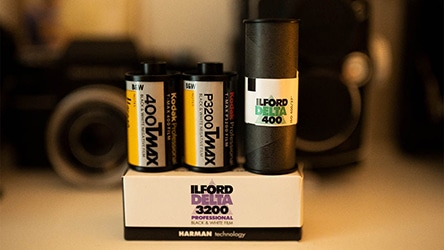10 years ago, there was barely a reason to ask ‘what B&W film should I buy?’ The only people still shooting film were those who refused to let it go.
I remember purchasing a Diana camera as a gift from Urban Outfitters at a ridiculous markup. Only to forget that I still needed to buy a roll of film to use it. As a digital shooter at the time, the whole thing seemed archaic but fun.
The sad thing though, is I probably could have bought a Hasselblad or Leica at a garage sale for the same price.
Over the last three years, I’ve shot more than 1000 rolls of film, and I still marvel at how lucky we are to still have film photography around and thriving.
There are still a large variety of film stocks available on the market. And many of them serve a specific purpose and niche.
In this article today, I’m going to help demystify the black and white film stocks that are available, and which ones you should choose for your intended purpose. Of course, any of the films listed here can be used for any purpose. But their characteristics often lend an advantage when shooting in specific situations.
| Situation | Suitable Film |
| First Roll of Film | Ilford HP5+, Kodak Tri-X |
| When the lab only develops color film | Ilford XP2 |
| Classic film look | HP5 pushed to 800, Tri-X, Fomapan, Delta 3200 pulled |
| Most Archival | JCH Streetpan 400, Bergger Pancro 400, Agfa films, Rollei films |
| Everyday snapshots | Kentmere 100/400, Fomapan |
| Street Photography | Tri-X, JCH Streetpan 400 |
| Low Light | Ilford Delta 3200 |
| Portraiture | Delta 100/400, Ortho 80 |
| Landscape | SFX 200 |
| Sharpest/Finest Grain | Delta/T-Max films |
| Widest Exposure Latitude | Ilford XP2 |
| Push/Pull Flexibility | Ilford HP5+ |
The first roll all beginner film photographers should try is Ilford HP5+ or Kodak Tri-X. These two classic film stocks are the most tolerant of over and underexposure, and will produce good results in almost all lighting scenarios. They’re also very tolerant of changes in development times and temperatures, making them great for beginners.
If it’s your first time picking up a film camera, these two are definitely the film stocks you’ll want to pick up. If you’re having trouble choosing, go for whichever one is cheaper. Tri-X has more contrast and deeper blacks, but Ilford HP5 is the most flexible film on the market. Neither one of them will let you down. 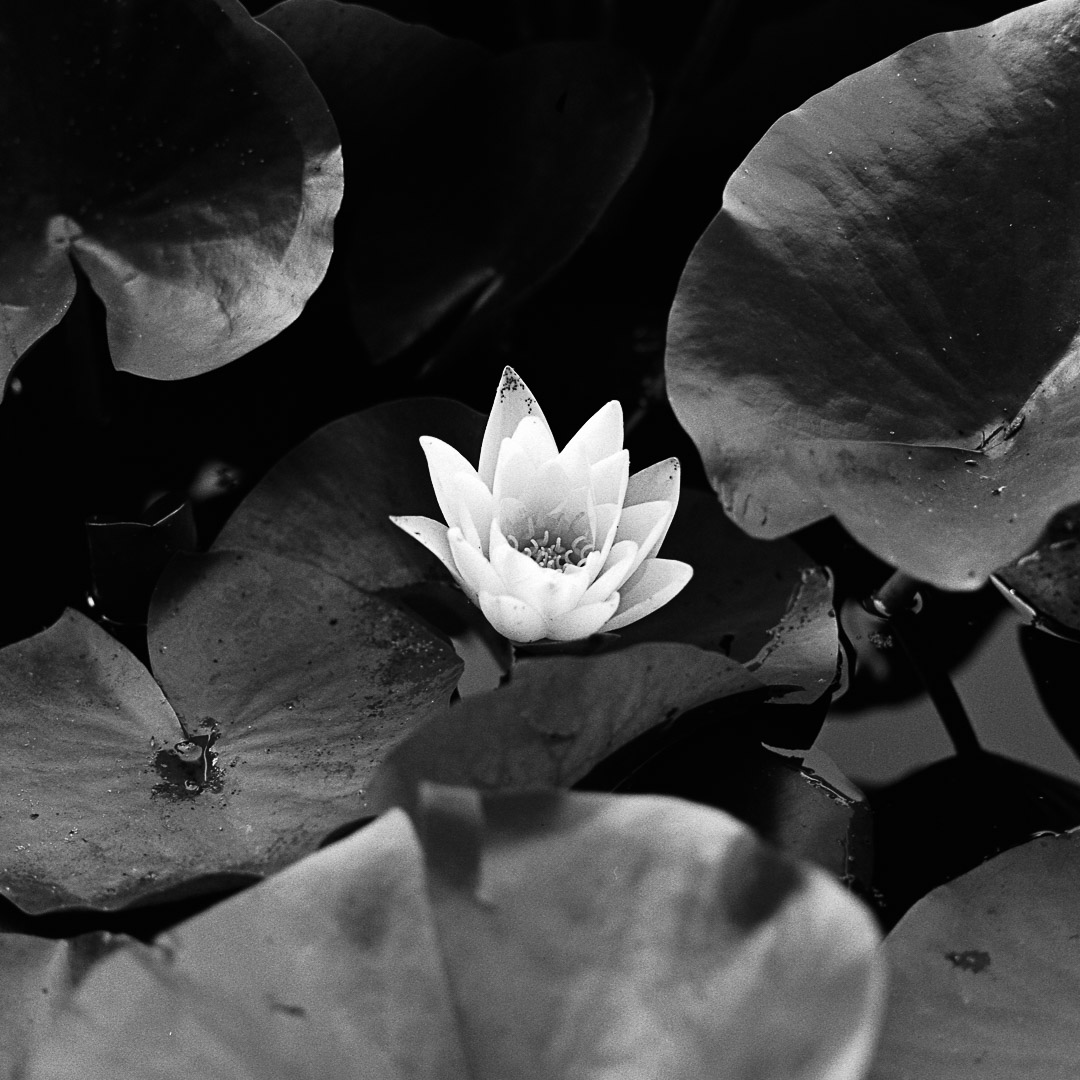
Should I buy color or Black and white?
Color films are a ton of fun, and I’ve grown to love them over the pandemic for their richness and the imperfect way they capture life. The way colors are rendered on film is of course a major draw for new users. Digital film emulations don’t work so well and aren’t nearly as fun as capturing the real thing. Simulating quirks and imperfections just feels fake when done poorly. But if you’re just getting started, should you buy a roll of color or black and white film?
If you’re not interested in developing film, a cheap color roll like Fuji C200 or Kodak Gold can be a great introduction to film photography. Those interested in the entire film photography process will have an easier time with B&W film because the developing process is more forgiving than color.
Color films are great for taking snapshots of friends and capturing the golden summer sun. But when you want something different, color films very quickly become expensive. Going from Kodak Gold or Ultramax up to a pro stock like Ektar or Portra will double your costs before you even blink. Get a slide film and that price triples.
Developing color films is also a challenge. Color film developing requires strict temperature control, and is unforgiving when it comes to chemical contamination or poor technique. Color developing kits are also expensive and need to be used within a single month before they go bad. To get the most of it, you’ll have to stockpile multiple rolls of film. And those first rolls are crucial if it’s a new camera since you don’t even know if it works yet.
B&W, on the other hand, has a lot more options. It’s much easier to get the hang of, requires less equipment, and is very tolerant of minor mistakes. Color B&W Pros Easy to shoot
Every lab takes color film
Great results without editsEasy to develop at home
More exposure latitude
Cheaper
More processing choices
Can make darkroom printsCons Harder to develop at home
Less exposure latitude
requires more equipment to develop at homeNo color
What’s the difference between T-Grain and Regular films?
When you’re looking at film stocks, you’ll often find that there are a couple of varieties that look exactly the same on the shelf. For example, Delta 400 and HP5 are both Ilford films, they both have green boxes and the same ISO rating. So what’s the difference between these two? And why is Delta more expensive?
Ilford’s Delta and Kodak’s T-Max lineups are both T-Grain or Tabular grain films. What that means for the film is best described in Bill Troop and Steve Anchell’s The Film Developing Cookbook, which is a treasure trove of information about B&W films, developers, and darkroom techniques for modern photographers.
T-Grains are thinner and longer than conventional grains, allowing them to capture more light. T-grain films are sharper and show finer-grain results than conventional films. But they don’t have the same gradation or tonality as classic-grain films and are more sensitive to changes in development time and temperature.
For example, the T-grains in Kodak T-Max 400 capture the same amount of light as Tri-X, despite using 30% less overall particles of silver. But the fewer silver particles result in fewer shades of grey across. The results are sharper images with less-apparent grains. Classic-grained films, like Tri-X, on the other hand, have a higher tonal and dynamic range, making them ideal for pushing and pulling.
If you’re taking photos in a studio, or professional environment, T-Max or Delta will be the best choice to capture the objects and people sharp, and with the fewest grains possible. When you’re outside capturing candid photos in dynamic lighting situations, Tri-X and HP5 will be absolutely essential to capturing all of the details. Some of the initial reaction to T-Grain varieties can be found in this New York Times opinion piece from 1987.
You can also see a side-by-side comparison of Ilford Delta 100 versus Ilford FP4 here.
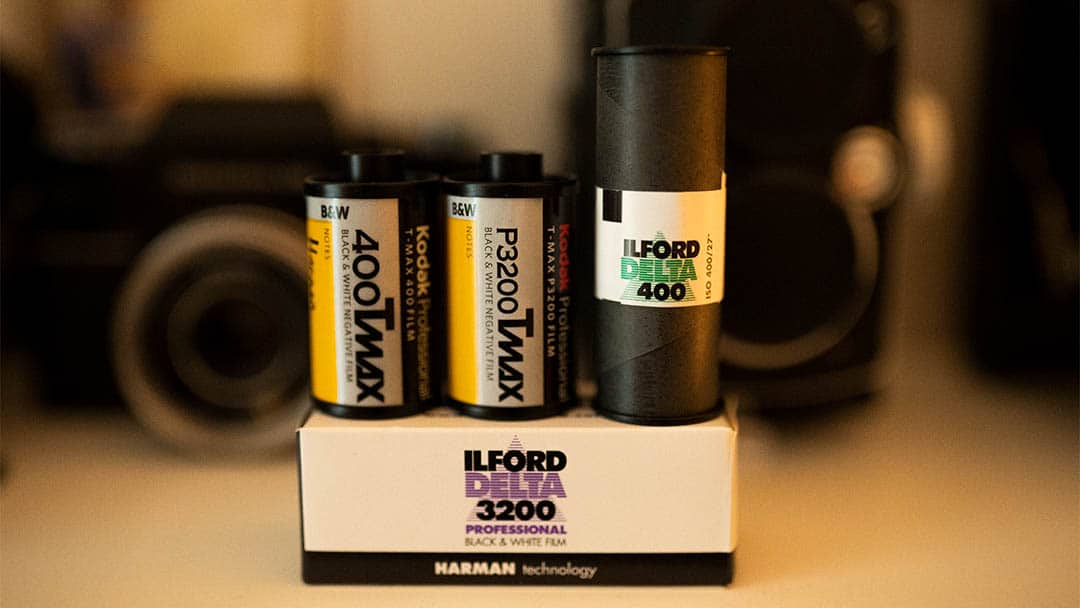
Is there a difference between Kodak T-Max and Ilford Delta?
Both these films were developed for the same purpose and around the same time, with Kodak introducing T-Max Professional in the Fall of 1986, and Ilford introducing the Delta lineup 6 years later in 1992. Both films have undergone some changes since then, as new formulations and advancements have come out.
According to Anchell and Troop, the biggest difference between Kodak T-Max and Ilford’s Delta films is the size of the T-Grains.
Kodak T-Max grains have a 1:8 aspect ratio, making them long and thin, while Ilford’s grains are notably thicker at a 1:5 ratio. The smaller grain size in Ilford’s Delta films means that they’ll show better tonal gradation than T-Max, but be slightly grainier in appearance.
Both films are extremely fine-grain, but Kodak’s are slightly finer. In practice, however, you’re not going to notice finer grain as easily as you’ll notice the finer tonal gradation — especially in the highlights.
But now that we have that out of the way, let’s get down to deciding what’s the best film for your purpose.
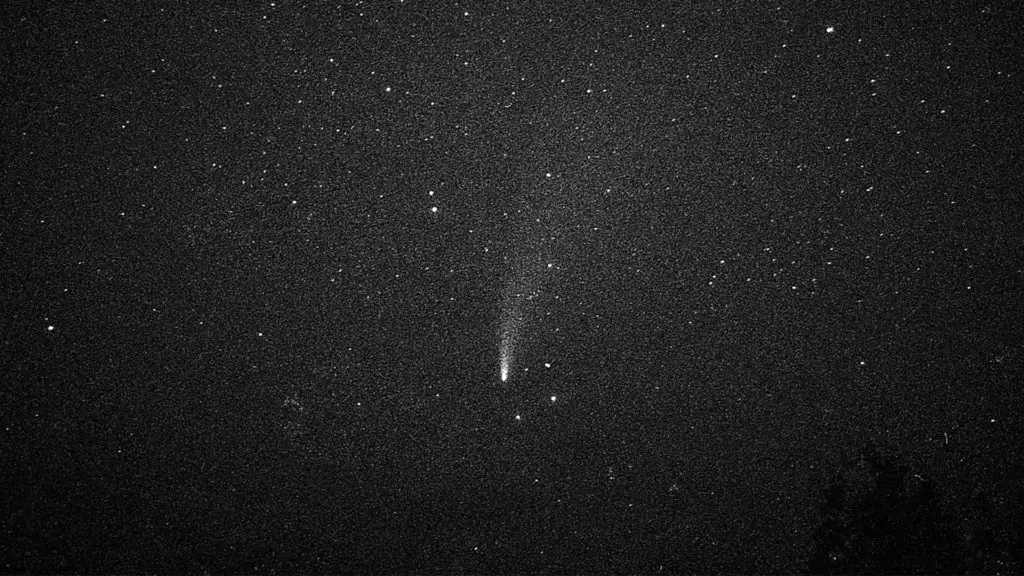
What are the best Black and White Films for Low Light?
The coolest thing about B&W film is that they’re incredibly flexible. With some theory in your back pocket, it’s completely possible to push these films to incredible ISOs without losing too much quality. There are also still a few film stocks out there rated for ISO 3200. Pushing a roll of color film that far would result in excess graininess, muddy shadows, weird saturation, and color shifts.
If you’re shooting in low light, or if you want coarse-grained images, shoot Ilford Delta 3200 or Kodak T-Max 3200. These are the fastest films currently being produced, and perform far better than any other film pushed to the same ISO.
Both Delta 3200 and T-Max 3200 are both T-Grain films, and are among the sharpest on the market, and are able to produce beautiful low-light images without being overly grainy. They’ll also show more shadow detail and lower contrast than pushing HP5 or Tri-X to the same ISO.
The interesting thing about that, is that even though both Delta 3200 and T-Max 3200 have a box speed of ISO 3200, the actual rating of the film is 1000. Kodak’s Technical Data Sheet suggests that T-Max 3200 only reaches the ISO 3200 mark when developed in T-Max developer. Other developers will see a speed reduction to ISO 800, meaning it won’t hurt to push the film one stop further during development.
I’ve spent the most time shooting with Ilford Delta 3200, which has so far become one of my favourite stocks ever. I’ve found through my years shooting it that it creates the best negatives when it’s pushed one stop further than it’s shot at. So if I’m exposing the film at ISO 3200, I’ll develop it using the 6400 times for the best results. Pushing it one stop further often renders the most beautiful negatives you’ll ever see.
If you don’t have any ISO 3200 film available, the next best stock to use is Ilford’s HP5. This is the most pushable and flexible film on the market. And despite being a 400 speed film, it will not disappoint in low light.
Learn more about shooting film in low light here.
What’s the Finest Grain Film Stock?
Scientists and photographers have been searching for ways to get finer grains since the beginnings of photography. It seems like a great tragedy that fine grain structures were only really achieved just before the digital revolution hit. And now, most of the people going back to film photography are more in it for the grains than the fine-grain, perfectly sharp films the greats who came before us could only dream of.
But that doesn’t mean there’s a time and a place where a fine-grained film is the most beautiful sight you could set your eyes on. So if you’re looking for sharp films with smooth tonal renditions, what are the best options out there?
The finest grained films are typically T-Grain films like Ilford Delta 100, or Kodak T-Max 100, or Fuji Acros II. All of these films are steller performers that show exceptionally sharp, fine-grain results when developed in DD-X or T-Max developers.
The simplest way to get fine-grain results is to use the lowest ISO film possible for the lighting situation. And the reason for that is simple — the grains in low-speed films are much smaller and more tightly packed together than high-speed films. The introduction of Tabular grain films also gives a fantastic advantage, in that manufacturers are better able to pack the silver particles together to capture the maximum amount of time with the smallest number of grains.
Other options that will also provide great results are FP4, Pan F, and XP2. But a surprisingly fun and versatile film that is fantastically fine-grained is Kentmere 100. This budget film packs a serious punch, and will not let you down when you need fine grain and a bit of extra speed.
Another interesting candidate for fine-grain enthusiasts is Ilford’s XP2. This is the only chromogenic film on the market. Chromogenic is just a fancy way of saying it uses the same technology as color films, and is developed in C41. This film has a very fine grain because it produces clouds of dye to create the image. It’s sharp, and has an exceptional exposure latitude and is more tolerant of over-exposure than any other B&W film on the market. The only downside is that it’s not archival because of the C41 process.
Which black and white films are the most archival?
Because of the materials used to make film bases, the average roll will last only 40 years before it starts to break down. If you’re working on a project that you’d like to remain archival, then you’ll need a film made from a different kind of base.
The most archival films are made using polyester bases, which last 4-5x longer than the standard acetate bases used by Ilford, Kodak, and Fuji. Luckily, there are a number of manufacturers that do use polyester bases, but they’re usually used in the more specialist film stocks.
These manufacturers are Japan Camera Hunter, which makes StreetPan 400, Bergger Pancro 400, Rollei, and Agfa films. Information on what the film is made from can be found on the technical datasheets that are usually made for every film.
Are the Cheap Rolls of Film Worth Buying?
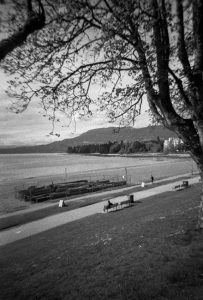
I avoided these films for the first two years of my film photography journey, thinking cheap film wasn’t worth saving a couple of bucks. The first time that I tried Kentmere 400 was when it came with my Harman Reusable Camera. And ever since then, I’ve been hooked!
According to Ilford, the Kentmere lineup contains less silver than their Plus or Delta films. This means that while they’re conventional-grained films, they won’t have the same exposure latitude as HP5 or FP4. while that may be the case, these films are still wicked cool. I’ve used them mostly for just hanging around with friends, pushing to insane degrees in my Harman Reusable camera.
I probably wouldn’t use this film for taking professional portraits. But with how flexible, usable, and cheap they are, I have no problem doing everything else with them. In fact, when I’m not testing out another film, Kentmere 100 and 400 are usually what’s found in my cameras.
What are the contrastiest B&W films?
There is a special place in my heart for contrasty films. There are times when you just want a negative that’ll render the scene so beautifully without any work. And when that’s your goal, HP5 or Tri-X just aren’t going to do — you need something different.
That’s where Japan Camera Hunter StreetPan 400 comes in. I tried this film for the first time last year, and it’s already a favorite in my collection. It’s actually the best discovery I made in 2020.
This film was originally made as a street security camera film. So it was designed to capture details through fog, haze, and other atmospheric conditions that make photography difficult. Think about when you see blurry street camera photos from grocery store thefts online. The footage is never the highest quality, but it’s contrasty. This is because that extra contrast can be the difference in finding out who the burglar was, or not.
In the real world this film is unlike anything else on the market today. It has such rich blacks that’ll make you drool when rendered on modern-day scanners. The next best thing is Tri-X — especially when pushed to ISO 800.
Which B&W film should I use for portraiture?

There are two considerations when choosing a Black and White film for portraiture. One: do you want to get the sharpest image possible? Or two: do you want to show off the grains and get that classic film look?
If sharpness is your thing, then Ilford Delta all the way. This T-Grain film has been mentioned multiple times because it’s such a mainstay in the fashion and lifestyle scene. This film is extremely sharp and has a wonderful fine-grain structure that’ll make your model pop out of the scene.
When you’re looking for that characteristic classic film look, you have to go with a conventional grained film like HP5, or even Delta 3200 pulled to ISO 800. Both of these films will add extra graininess to the images. And the tonal quality of HP5 renders light and skin tones with a magazine-like quality that can’t be found on any other film. The extra range also makes it super easy to edit the image to reduce the appearance of blemishes or unflattering light.
In my own work, I’ve loved the dreamy look of Delta 3200 with a single light on a black background. This film is so cool, and produces a fantastic classic look when its pulled. The lack of contrast, again, is very helpful in the editing, or dodging and burning process.
Another interesting option is Ilford Ortho 80. Ilford brought this emulsion back in 2019 to fill in a gap in the marketplace. Orthochromatic films are B&W emulsions that are not sensitive to red light, so they can be developed in a darkroom. Typically, they’re used to make copies of negatives, but they’re starting to become especially interesting for portraiture. Because they lack sensitivity in the reds, features like rosy cheeks, or red lips show darker in the resulting negatives. It’s a fun film to experiment with, and can definitely create an interesting look. Plus, it can give you a lot more control when you can see negatives developing in front of your eyes in the darkroom.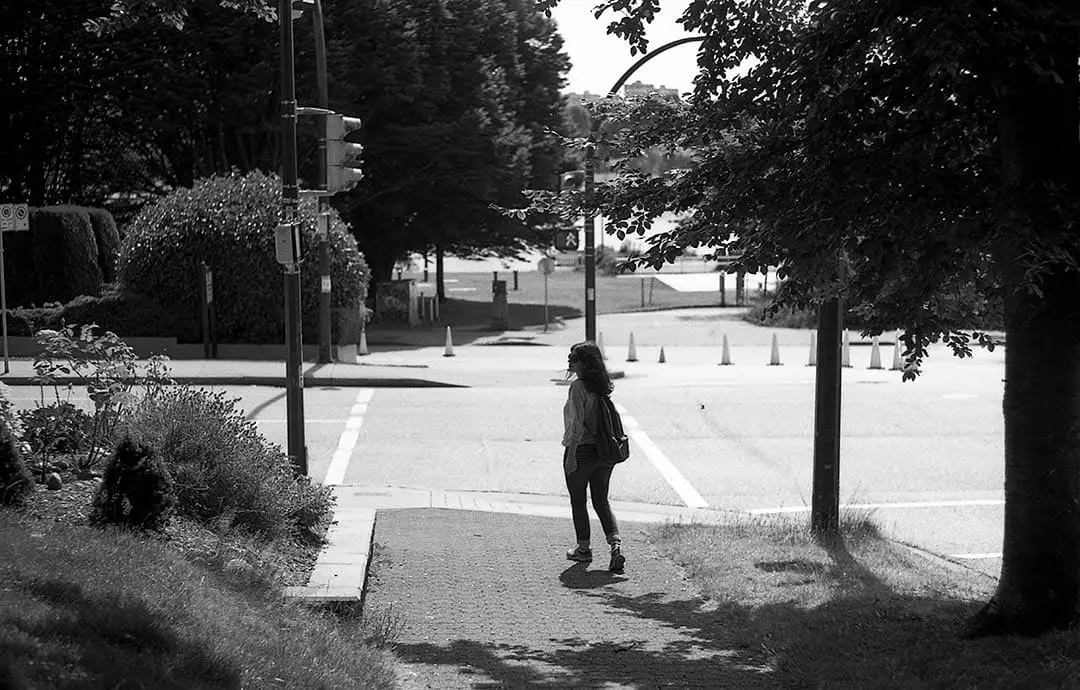
Which films do street photographers use?
Ask any street photographer or photojournalist what film stock they used between 1960 and 2000, and they’ll probably Kodak Tri-X. Ever since its inception, Tri-X has been a mainstay in the photojournalistic world. Because of its history, this is the best selling film stock of all time.
Its wide exposure latitude is often the reason it’s cited as the most useful for street and urban photography. It can take high-contrast scenes like the shadows at golden hour, and render an image with fantastic shadow detail. It can also be over exposed multiple stops to produce a flatter negative when needed, or pushed to ISO 3200 without blinking. No matter what kind of abuse you put it through, this is the film stock that can keep up.
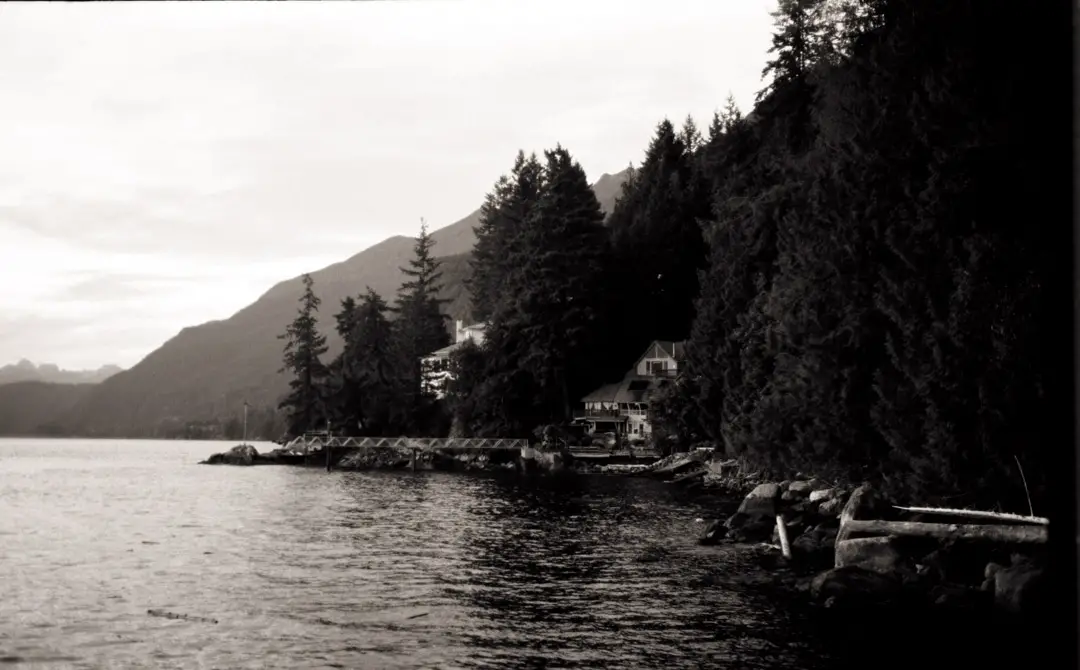
What’s the best B&W film for landscape photography?
There are some really interesting options available on the market for Landscape Photography. Many landscape photographers love using B&W Infrared films, which can make blue skies darker when using a red filter.
The red filter reduces the amount of blue light that enters the camera. This makes the sky appear darker, but it also moves the green part of the spectrums lighter, giving the leaves a characteristic infrared white glow.
If this is the look you’re going for, there are a couple of films that’ll get you there. The best infrared film available is Ilford’s SFX 200, but Rollei also has an Infrared film in their lineup that’ll give you that look. Make sure to over-expose the film by at least one stop when using a deep-red filter.
What’s your favorite B&W film to shoot? Let me know in the comments below, or send me a DM on Instagram! I love seeing and hearing everyone’s work, and often feature the best shots in my stories. Use the hashtag #LearnFilm for a chance to be featured!

By Daren
Daren is a journalist and wedding photographer based in Vancouver, B.C. He’s been taking personal and professional photos on film since 2017 and began developing and printing his own photos after wanting more control than what local labs could offer. Discover his newest publications at Soft Grain Books, or check out the print shop.

